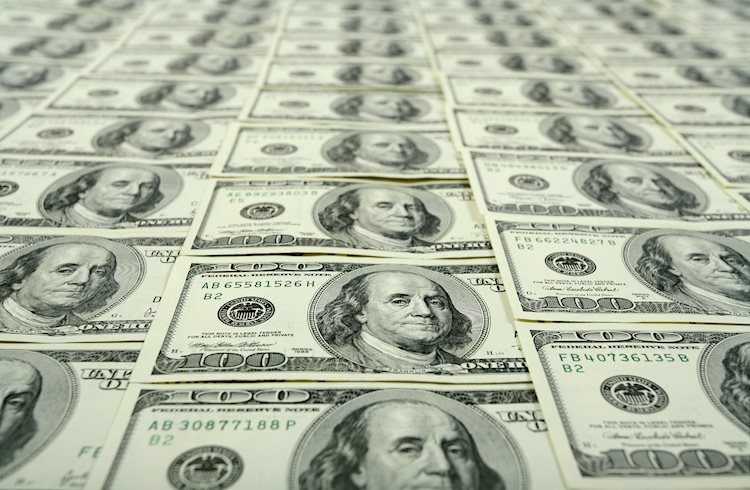- The US Dollar gives back parts of last week’s gains at the start of a holiday-shortened week due to Thanksgiving.
- President-elect Donald Trump has nominated Scott Bessent for the role of Treasury Secretary.
- The US Dollar Index falls below 107.00 and is looking for support near 106.70.
The US Dollar (USD) fades by nearly 1% at the start of the week after President-elect Donald Trump confirmed his nomination for Scott Bessent over the weekend for the Treasury Secretary in his upcoming cabinet. Bessent is considered a fiscal hawk, targeting a budget deficit of 3% of GDP by 2028 while indicating that he is backing tariff and tax cut plans. Investors seem to be taking this nomination as mildly positive as it eases some concerns regarding the impact of Trump’s fiscal plans.
The US economic calendar is facing a bit of an odd week with the public holiday on Thursday for Thanksgiving. All US data for Thursday and Friday has been moved to Wednesday, with the Personal Consumption Expenditures (PCE) for October, the second estimate of the third quarter US Gross Domestic Product (GDP) and the weekly jobless claims as most influential data points. A rather soft start for this Monday with the Chicago Fed National Activity Index for October and the Dallas Fed Manufacturing Business Index for November due.
Daily digest market movers: US already in Thanksgiving mode
- Monday’s calendar kicked off with the Chicago Fed National Activity Index for October. The actual number came in at -0.4 against the previous month’s number at -0.28.
- The Dallas Fed Manufacturing Business Index for November has ticked up to -2.7, coming from the October reading at -3.
- Equities are broadly in the green across the globe. Japanese indices already closed off higher on the day, near 1% gains on average. European equities and US futures are in a positive tone, up around 0.50% on average.
- The CME FedWatch Tool is pricing in another 25 basis points (bps) rate cut by the Fed at the December 18 meeting by 56.1%. A 43.9% chance is for rates to remain unchanged.
- The US 10-year benchmark rate trades at 4.29%, sliding further away from the high printed two weeks ago at 4.50%.
US Dollar Index Technical Analysis: Risk on presents for Thanksgiving
The US Dollar Index (DXY) eased somewhat during the Asian trading session on the back of President-elect Donald Trump’s nomination of Scott Bessent for the Treasury position. A knee-jerk reaction could be taking place as this weakness has been fully erased and might see the DXY advance further. On the upside, 107.35 remains key before looking for any levels above 108.00.
The fresh two-year high at 108.07 seen on November 22 is the first level to beat next. Further up, the 109.00 big figure level is the next one in line to look at. The support from October 2023 at 109.36 is certainly a level to watch out for on the topside.
Support comes in around 106.52, the double top from May. A touch lower, the pivotal 105.53 (April 11 high) should avoid any downturns towards 104.00. Should the DXY fall all the way towards 104.00, the big figure and the 200-day Simple Moving Average at 103.98 should catch any falling knife formation.
US Dollar Index: Daily Chart
GDP FAQs
A country’s Gross Domestic Product (GDP) measures the rate of growth of its economy over a given period of time, usually a quarter. The most reliable figures are those that compare GDP to the previous quarter e.g Q2 of 2023 vs Q1 of 2023, or to the same period in the previous year, e.g Q2 of 2023 vs Q2 of 2022. Annualized quarterly GDP figures extrapolate the growth rate of the quarter as if it were constant for the rest of the year. These can be misleading, however, if temporary shocks impact growth in one quarter but are unlikely to last all year – such as happened in the first quarter of 2020 at the outbreak of the covid pandemic, when growth plummeted.
A higher GDP result is generally positive for a nation’s currency as it reflects a growing economy, which is more likely to produce goods and services that can be exported, as well as attracting higher foreign investment. By the same token, when GDP falls it is usually negative for the currency. When an economy grows people tend to spend more, which leads to inflation. The country’s central bank then has to put up interest rates to combat the inflation with the side effect of attracting more capital inflows from global investors, thus helping the local currency appreciate.
When an economy grows and GDP is rising, people tend to spend more which leads to inflation. The country’s central bank then has to put up interest rates to combat the inflation. Higher interest rates are negative for Gold because they increase the opportunity-cost of holding Gold versus placing the money in a cash deposit account. Therefore, a higher GDP growth rate is usually a bearish factor for Gold price.
Read the full article here

